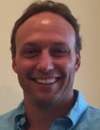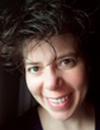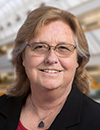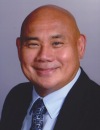Co-Located Conference AgendasBioprinting and Bioink Innovations for 3D-Tissues 2022 | The Space Summit 2022 | 

Monday, 7 November 202208:00 | Conference Registration, Materials Pick-Up, Morning Coffee and Tea | 08:45 | Morning Programming Joint with the Parallel Track on 3D-Printing and Bioinks -- Please View Morning Agenda in the Parallel Track Website | 14:00 |  | Conference Chair Impact of Microgravity on Biological and Physical Systems
Marc Giulianotti, Sr. Manager, In Space Biomanufacturing, Sierra Space, United States of America
|
| |
Human Spaceflight Moderated Panel Discussion. Panel Chair: Jana Stoudemire, Axiom Space |
| | 14:20 |  | Keynote Presentation Transforming the Future of Human Spaceflight with Bio-Engineered Autonomous Platforms
Jennifer Fogarty, Chief Scientific Officer, Translational Institute for Space Health, Baylor College of Medicine, United States of America
Humans participating in space exploration will experience many health and performance challenges during space exploration missions. It is paramount that we identify biological vulnerabilities and areas of resilience so that we can design a crew health and performance system approach that protects the human and enables explorers to thrive during the journey, on a planetary surface, and as we become a multiplanetary species. The Translational Research Institute for Space Health (TRISH) is chartered to find and fund cutting edge high-risk research and technology development to address the risks and challenges of human spaceflight. One of the most challenging aspects of doing research on the human risks associated with deep space exploration is having tools that accurately and efficiently reveal the resilience and vulnerabilities we seek to identify without putting humans directly at risk. Bio-engineered platforms such as tissue chips (microphysiological systems) and organoids represent cutting edge approaches to research and personalized medicine that meet space explorations needs. The progressive maturation and validation of these platforms establishes them as necessary tools to conduct biological research and establish personalized preventive and treatment therapies. To become operationally relevant in the constrained and extreme environments associated with space exploration these platforms must become automated. This phase of development will require new approaches to biomarker signal detection and quantification while we continue to build the evidence base to allow interpretation and most importantly actionable results. |
| 14:40 |  | Keynote Presentation Utilizing Tissue Engineering and 3D Models to Address Space Exploration Risks
Kristin Fabre, Deputy Chief Scientist, NASA Human Research Program, NASA, United States of America
Dr. Fabre will give a brief overview of challenges and research gaps that need characterized to help optimize health and performance during space exploration missions. She will provide a couple notional case scenarios on how 3D models and bioengineered tissue platforms could be used for space health research. |
| 15:00 | Open Science for Life in Space: Data Sharing and Tools for Knowledge Discovery
Sylvain Costes, Chief for the Space Biosciences Research Branch, NASA Ames Research Center, United States of America
The enormous success and knowledge gained from NASA GeneLab has led to a collection of sister NASA “Open Science Data Repositories (OSDR)” and research support groups. These include the NASA Ames Life Sciences Data Archive (ALSDA), the NASA Biological Institutional Scientific Collection (NBISC), and the Biospecimen Sharing Program (BSP). Dr. Costes will discuss the full landscape of Open Science for Space Biology. | 15:20 | Stem Cells in Low Earth Orbit: Prospects for Basic Science and Biomanufacturing
Arun Sharma, Assistant Professor, Cedars-Sinai Medical Center, United States of America
The International Space Station and Low Earth Orbit (LEO) can serve as an accessible, unique environment for stem cell research and development in microgravity. Human induced pluripotent stem cells (hiPSCs) and their derivatives can be grown long-term in LEO, with changes to cell function and gene expression. Stem cell biomanufacturing in LEO is being explored through commercial, governmental, and academic collaboration, although significant basic science data still needed to determine the full potential of growing stem cells in space. | 16:00 | Afternoon Coffee Break | 16:20 | High-Content Human-based Models towards Applications in Terrestrial and Space Research
Y. Shrike Zhang, Assistant Professor of Medicine, Harvard Medical School, Associate Bioengineer, Division of Engineering in Medicine, Brigham and Women’s Hospital, United States of America
3D biofabrication offers great versatility in the generation of biomimetic volumetric tissues that are structurally and functionally relevant. This talk will discuss our recent efforts in developing high-content human-based models through biofabrication, which when combined with microfluidic chip-based systems, are likely to provide new opportunities for research benefiting human health both in space and on Earth. | 17:00 |  | Keynote Presentation Stem Cell-derived Neural Organoids on the ISS
Jeanne Loring, Professor Emeritus, The Scripps Research Institute; Founder, Aspen Neuroscience, United States of America
To begin to understand the possible effects of microgravity on the brain, we sent neural organoids derived from induced pluripotent stem cells to the ISS. The organoids, representing 4 different people, were cultured for about 30 days on the ISS. The organoids thrived in microgravity and were returned alive for analysis. Compared to organoids that remained on Earth, the organoids in low earth orbit had significant differences in gene expression. These results are preliminary, based on only one mission, but are being validated with results from two additional missions. |
| 17:20 | Recap and Closing Remarks by Conference Co-Chairperson
Marc Giulianotti, Sr. Manager, In Space Biomanufacturing, Sierra Space, United States of America
| 17:30 | Network Reception with Beers -- Network and Engage with Colleagues and Exhibitors | 18:30 | Close of Day 1 of the Conference |
Tuesday, 8 November 202208:00 | Morning Coffee, Tea, Pastries and Networking | 08:30 |  | Conference Chair Opening Remarks by Conference Co-Chairperson
Jana Stoudemire, Director, In-Space Manufacturing, Axiom Space, United States of America
|
| 09:00 |  | Keynote Presentation The NIH Microphysiological Systems Program: Tissue Chips for Tools for Drug Development and Precision Medicine
Danilo Tagle, Director, Office of Special Initiatives, National Center for Advancing Translational Sciences at the NIH (NCATS), United States of America
Approximately 30% of drugs have failed in human clinical trials due to
adverse reactions despite promising pre-clinical studies, and another
60% fail due to lack of efficacy. A number of these failures can be
attributed to poor predictability of human response from animal and 2D
in vitro models currently being used in drug development. To address
this challenges in drug development, the NIH Tissue Chips or
Microphysiological Systems program is developing alternative innovative
approaches for more predictive readouts of toxicity or efficacy of
candidate drugs. Tissue chips are bioengineered 3D microfluidic
platforms utilizing chip technology and human-derived cells and tissues
that are intended to mimic tissue cytoarchitecture and functional units
of human organs and systems. In addition toxicity studies in drug
development, these microfabricated devices are also being used to model
various human diseases for assessment of efficacy of candidate
therapeutics. A more recent program is the development of “clinical
trials on chips” to inform clinical trial design and implementation, and
for studies in precision medicine. Presentation will provide a program
update and future directions towards widespread use of tissue chip
technologies in partnerships with various stakeholders. |
| 09:40 | Morning Coffee Break | 10:00 |  You can Bioprint in Space Now: Redwire’s 3D Bioprinter is Ready Aboard the ISS You can Bioprint in Space Now: Redwire’s 3D Bioprinter is Ready Aboard the ISS
Molly Mulligan, Director, Business Development, Redwire
Have you ever wondered what happens when we remove gravity from our biological processes? In low Earth orbit (LEO), 400 kilometers above our heads, is the International Space Station (ISS), an orbiting research facility that provides a proving ground for innovation and next generation technology. The ISS is open for bioprinting utilizing the unique environment of microgravity. Biological systems studied in microgravity are dominated by surface tension and diffusion rather than sedimentation and convection. In the microgravity environment on the station: cells form 3D structure without the use of a scaffolding or matrix; we can print larger 3D tissue constructs without the tissue collapsing under its own weight before strengthening; we can study the mechanisms involved in biofabrication; and much more. Learning how forces other than gravity affect the process of biofabrication can help us learn new things about our processes on Earth and allows us to find ways to minimize those forces to create new and innovative products on Earth. Redwire Corporation enables bioprinting and biofabrication in microgravity, where there are unique solutions to many problems in the laboratory and lots of room for innovation. The company has the only extrusion-based 3D bioprinter on the ISS, called the Biofabrication Facility (BFF). Redwire seeks to understand what the latest technology breakthroughs are terrestrially, so that microgravity can be used to create even more innovation in the fields of bioprinting and biofabrication. As always, the ISS is open for research from around the world, and Redwire is eager to collaborate.
| 10:20 |  Automated Volumetric Additive Manufacturing: Revolutionary 3-D Bioprinting Enabled by Microgravity Automated Volumetric Additive Manufacturing: Revolutionary 3-D Bioprinting Enabled by Microgravity
Alain Berinstain, Chief Innovation Officer, Space Tango
Automated Volumetric Additive Manufacturing for in space productions is introduced to audiences as an innovative solution to manufacture artificial cartilage tissues addressing terrestrial development challenges such as geometric fidelity, slumping/deformation of the materials due to gravity and control of cell positioning.
| 10:40 | Engineering Skeletal Muscle in Microgravity to Advance Sarcopenia
Ngan Huang, Associate Professor of Cardiothoracic Surgery, Stanford University, United States of America
This presentation overviews the effects of space flight on engineered skeletal muscle at the transcriptional level to mimic aspects of sarcopenia. The feasibility of drug screening to treat sarcopenia using this microgravity platform will be discussed. | 11:00 | Biomimetic Fabricated Janus Base Nano-matrices for Tissue Chips and Cartilage Regeneration
Yupeng Chen, Associate Professor, University of Connecticut, United States of America
Absence of biomechanical loading in microgravity can result in articular cartilage degeneration. Once damaged, cartilage has very limited self-regeneration. Therefore, many biomaterial scaffolds have been developed for cartilage tissue engineering. Conventional solid scaffolds are not injectable so they have limitations for applications in “difficult-to-reach” locations, such as microchannels of tissue chips or deep-tissue damage; hydrogels are semisolid materials so they don’t have solid surface for cell anchorage which could be a limitation in space. To overcome this challenge, we have developed a family of self-assembled scaffolds, named Janus base nano-matrices (JBNms). JBNms are formed by the self-assembly between Janus base nanotubes (JBNts, non-covalent nanotubes mimicking DNA base pairs) and extracellular matrix proteins (such as matrilin, a cartilage specific protein). We have also found that the JBNm presented synergistic functions from JBNts and matrilin, which can create a microenvironment selectively promoting chondrogenic differentiation of stem cells. We have demonstrated that the JBNm can significantly improve longevity and reusability of cartilage tissue chips as while as growth plate cartilage regeneration in a preclinical animal model. Therefore, the JBNm is a versatile scaffold suitable for cartilage tissue engineering and tissue chip applications on Earth and in space. | 11:20 | Low Earth Orbit Research Opportunities on the International Space Station
Kristin Kopperud, Science Program Director, Biological Sciences, International Space Station National Laboratory, United States of America
Overview of the ISS National Laboratory, including its mission, role, and unique set of experimental conditions. I will also discuss some research opportunities, from past to upcoming, that are available to researchers desiring to conduct experiments in microgravity. | 11:40 | How to Successfully Conduct Cell Culture, Tissue Engineering and Organ-on-a-Chip Research on Board the International Space Station
Stefanie Countryman, Director, BioServe Space Technologies, United States of America
This presentation will discuss the process for supporting cell culture, tissue engineering and organ-on-a-chip research on board the ISS. The presentation will cover translation of ground-based research to space-based research, hardware development and support and the overall process for successfully designing and conducting research in space. | 12:00 | Networking Lunch | 13:20 | Liver Tissue Engineering in Space
Tammy Chang, Associate Professor of Surgery, University of California-San Francisco, United States of America
End-stage liver disease is a leading cause of death by disease in the United States, and the only current treatment is liver transplantation. The critical shortage of donor organs limits the effectiveness of liver transplantation as a treatment modality and has spurred intense research to develop alternative approaches, including differentiating hepatocytes from human stem cells as sources for functional tissue replacement therapy. In this talk, the speaker will present findings from her laboratory that demonstrate microgravity-enabled self-assembly of highly functional liver organoids derived from human induced pluripotent stem cells, and discuss the potential for large-scale high-throughput biomanufacturing of organoids and larger tissue constructs in low Earth orbit. | 13:40 | Investigation of Cell Mechanics of Osteoblasts in Microgravity
Nadab Wubshet, Researcher, University of Michigan, United States of America
With growing investments in long-term space exploration and space travel, it becomes important to uncover the physiological adaptations of terrestrial life. However, there is no genetic memory that can be extracted from changes in physiological responses to variable gravity, since gravity is unchanging on Earth. Thus, it is immensely helpful to understand how microgravity affects cell signaling, gene expression, cell mechanics, and overall cellular physiology and function. To investigate the effects of simulated microgravity on cellular function on the ground, a random positioning machine (RPM) is developed in this work. Furthermore, microfluidic micropipette aspiration device was used to robustly measure cell mechanical properties under simulated microgravity. | 14:00 |  | Keynote Presentation Regnerative Medicine and 3D-Bioprinting
Michael Gelinsky, Professor and Head, Center for Translational Bone, Joint and Soft Tissue Research, Faculty of Medicine, Technische Universität Dresden, Germany
|
| 14:30 | Towards a Functional Micro-Organ Model of Human Cardiovascular Stiffness-related Diseases in Microgravity and on Earth
David Sachs, Assistant Professor, Genetics and Genomic Sciences, Icahn School of Medicine at Mount Sinai, United States of America
We are developing a functional micro-organ model of the human cardiovascular system, containing iPSC-derived cardiac and vascular components linked in a circulatory system. In partnership with Space Tango, we will use this system on the ISS to model cardiovascular stiffness related diseases in microgravity. | 14:50 | Electrophysiology Monitoring and Other Mechanistic Studies Aboard Microgravity and-or Spaceflight
Binata Joddar, Associate Professor of Biomedical Engineering, University of Texas El Paso, United States of America
Veerle Reumers, R&D Manager, imec USA, Belgium
The use of microfluidic tissue-on-a-chip devices in conjunction with electrophysiology (EPHYS) techniques has become prominent in recent years to study cell-cell interactions critical to the understanding of cellular function in extreme environments, including spaceflight and microgravity. Current techniques are confined to invasive whole-cell recording at intermittent time points during spaceflight, limiting data acquisition and overall reduced insight on cell behavior. Currently, there exists no validated technology that offers continuous EPHYS recording and monitoring in physiological systems exposed to microgravity. In collaboration with imec and SpaceTango, we have developed an enclosed, automated research platform that enables continuous monitoring of electrically active human cell cultures during spaceflight. The Neuropixels probe system (imec) will be integrated for the first time within an engineered in-vitro neuronal tissue-on-a-chip model that facilitates the EPHYS recording of cells in response to extracellular electrical activity in the assembled neuronal tissue platform. Our goal is to study the EPHYS recordings and understand how exposure to microgravity affects cellular interaction within human tissue-on-a-chip systems in comparison to systems maintained under Earth’s gravity. Results may be useful for dissecting the complexity of signals obtained from other tissue systems, such as cardiac or gastrointestinal, when exposed to microgravity. This study will yield valuable knowledge regarding physiological changes in human tissue-on-a-chip models due to spaceflight, as well as validate the use of this type of platform for more advanced research critical in potential human endeavours to space. | 15:10 | Afternoon Coffee Break | 15:50 | Tissue Chips in Space: Human Cartilage-Bone-Synovium Microphysiological System for Post-Traumatic Osteoarthritis
Alan Grodzinsky, Professor of Biological, Electrical and Mechanical Engineering, Director of the MIT Center for Biomedical Engineering, Massachusetts Institute of Technology (MIT), United States of America
Post-traumatic osteoarthritis (PTOA) is caused by a traumatic impact
joint injury associated with an augmented inflammatory environment (such
as an ACL rupture). This results in loss of cartilage and impaired
joint function, severely impacting the quality of life of otherwise
healthy individuals, compounded by the fact that there are no
disease-modifying drugs available for OA/PTOA, only short acting pain
killers that do not halt disease progression. Astronauts may be at
heightened risk of altered musculoskeletal physiology, thus impacting
their Space mission. With an aim of PTOA disease management on Earth and
supporting astronaut health during long space missions, our overall
objective has been to develop a microphysiological system (MPS) to
simulate aspects of PTOA pathogenesis and progression in vitro, and to
use this MPS to develop therapeutic regimens incorporating appropriate
drugs and dynamic exercise loading to prevent disease progression and
stimulate pro-anabolic responses. Analyses to date from ISS experiments
show changes in human knee tissues indicative of the earliest events in
the initiation and progression of PTOA. The effects of human variability
are also under study. Use of such an MPS on earth and in LEO-based
platforms could enable accelerated disease modeling, providing unique
insights into disease progression and development of therapeutic
interventions. Effects of altered loading of joint cartilage in space
may affect the rate of cartilage breakdown leading to OA. Microgravity
may uniquely enable the study of joint-disuse versus exercise in
management of OA and PTOA. | 16:10 | Monitoring Real-Time Biomechanics in a Muscle-on-Chip on SpaceX-25
Siobhan Malany, Associate Professor, University of Florida and Founder, Micro-gRx, United States of America
Through the Tissue Chips in Space program funded by the National Institutes of Health and NASA, we seek to leverage the unique environment of microgravity on the ISS to correlate changes in human skeletal muscle biology, particularly in genomics and biomechanics, with accelerated muscle dysfunction. Muscle degradation leads to a dramatic decline in mobility in an increasing aging population, yet age-related muscle atrophy or sarcopenia remains without effective therapeutic options, largely because molecular changes accumulate over decades. 3D Tissue chips have the potential to advance screening of drugs to counteract pathologies in vitro with clinically relevant physiology and they are adaptable for use in autonomous laboratories for space flight. In this work, we describe the characterization and advancements made in the development of a human muscle-on-chip that enables functional monitoring of donor-derived myobundles with electrical stimulation with the main goals to identify effective exercise mimicking regimes, evaluate therapeutic compounds and dietary supplements to benefit muscle health and establish a proof-of-concept technology platform in Lower Earth Orbit (LEO) for therapeutic development to treat the elderly, the athlete and the astronaut. | 16:30 |  | Keynote Presentation Immunological Senescence Impacts Tissue Stem Cells and Wound Healing in Space
Sonja Schrepfer, Professor of Surgery, University of California-San Francisco, United States of America
Spaceflight causes a suite of negative health effects that may be comparable to immuno-senescence, which seems to be a key regulator of the regenerative capacity of tissue- and organ-specific stem cells. Our data aim to understand the role of immuno-senescence on the regenerative capacity of tissue-specific stem cells. |
| 16:50 | Recap and Closing Remarks by Conference Co-Chairpersons: Jana Stoudemire and Marc Giulianotti | 17:00 | Close of Day 2 Programming |
|


 Add to Calendar ▼2022-11-07 00:00:002022-11-08 00:00:00Europe/LondonThe Space Summit 2022The Space Summit 2022 in Boston, USABoston, USASELECTBIOenquiries@selectbiosciences.com
Add to Calendar ▼2022-11-07 00:00:002022-11-08 00:00:00Europe/LondonThe Space Summit 2022The Space Summit 2022 in Boston, USABoston, USASELECTBIOenquiries@selectbiosciences.com